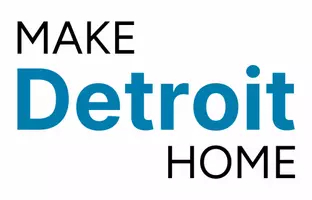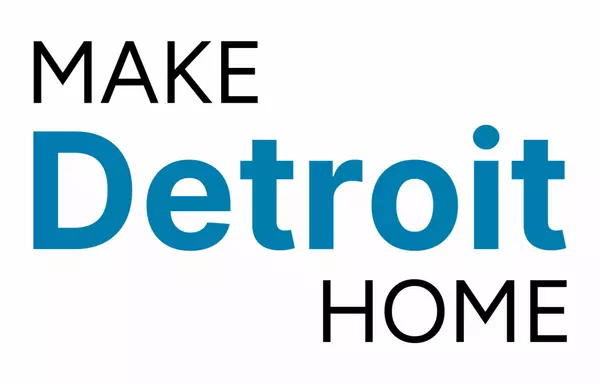Living in Detroit, Michigan: What to Know Before You Move
Living in Detroit, Michigan: What to Know Before You Move
Quick Snapshot
If you’ve ever thought about what it’s really like to live in Michigan’s most famous city, Detroit is probably more layered than you expect. I’ve lived here long enough to know that Detroit isn’t just one story — it’s hundreds of them overlapping: the smell of barbecue near Eastern Market, the view of the Detroit River at sunrise, the way people nod when they pass you on the street. It’s a major city with a small-town heartbeat.
As of 2025, Detroit’s population sits around 640,000, while the metro Detroit Michigan area pushes past 4 million residents. The city has seen steady investment in housing, transportation, and local business development — all while keeping its signature edge and authenticity. Median home prices are still much lower than the U.S. national average, hovering near the mid-$90,000 range, though the housing market varies widely between neighborhoods. Downtown Detroit and Midtown see higher average home values, while renovation-ready single-family homes remain common across parts of the city.
Neighborhoods & Housing Types
The Character of Detroit’s Neighborhoods
Every Detroiter has strong feelings about where they live. Some swear by the east side; others love the calm of Northwest neighborhoods or the energy of Midtown. The architecture alone tells Detroit’s history — brick colonials in University District, bold modern townhomes downtown, and historic duplexes near Boston-Edison that seem to whisper stories from another era.
Variety and Home Values
If you’re exploring places to live in Detroit, you’ll find a mix: stately homes near the Detroit Golf Club, cozy bungalows in Bagley, and new lofts along the riverfront. The median home price depends heavily on location — home value in Detroit can swing from under $60,000 in emerging neighborhoods to well over $400,000 near Downtown or Corktown. That range is what makes the Detroit housing market both exciting and unpredictable.
A Community Vibe
What unites these areas of the city is community. Neighbors talk over fences, share snow shovels, and check in when the power flickers. There’s a deep community vibe here — something you feel more than you can explain. Detroit residents take pride in rebuilding block by block, creating homes that tell personal stories of resilience and creativity.
Getting Around Detroit
Driving and Public Transit
Detroit is still a driver’s city — there’s no way around that — but the narrative is changing. Between the public transportation improvements and the QLINE streetcar that glides along Woodward Avenue, people in Detroit have more options than ever. The public transit network (DDOT and SMART) connects most metro areas, and I use it often when I don’t feel like driving.
Biking and Walking the City
Then there’s biking — the Joe Louis Greenway is one of the most exciting infrastructure projects in years, linking neighborhoods and parks into a continuous 27.5-mile loop. I often ride from New Center down through Dequindre Cut to the river. You pass murals, music, and families out enjoying the weather. It’s one of those things you need to know about living in Detroit — movement here feels alive again.
Commuting to Work
Most commutes fall under 25 minutes within the city, but the Detroit metro area sprawls — meaning if you work in suburban automotive or tech hubs, you’ll need to account for highway time. The nice part? Parking is easier than in most major cities. Even in Downtown Detroit, you’ll find affordable lots compared to other urban centers.
Jobs & Local Economy
Growing Beyond the Auto Industry
Everyone knows Detroit as the Motor City, but life in Detroit today stretches far beyond cars. Ford, GM, and Stellantis still drive much of the economy, but tech startups, healthcare, and green manufacturing are reshaping the Metro Detroit Michigan job market.
The unemployment rate sits around 4.2% as of mid-2025 — close to the national average — and new sectors are emerging faster than people are moving to fill them. Entrepreneurs, artists, and educators are claiming old industrial spaces and reimagining them for the future.
Real Work and Real Opportunity
If you’re considering a move to Detroit for work, know this: opportunity here often comes through connection. The business scene rewards those who show up, collaborate, and share ideas. Co-working hubs like TechTown and the Green Garage have become creative incubators for first-time home buyers, freelancers, and innovators alike.
Schools & Education Basics
District Overview
Detroit Public Schools Community District (DPSCD) serves most Detroit residents, alongside numerous charter and private options. Boundaries can shift, so always check the DPSCD’s official school zone finder for the latest updates.
Objective Information Only
The things to know about living in Detroit if you have kids: focus on data, not opinions. The Michigan Department of Education publishes test scores, graduation rates, and student-teacher ratios — all verifiable, official figures. I tell families to visit schools, talk to staff, and trust firsthand impressions more than ratings.
Education as Community
Schools here aren’t just buildings; they’re neighborhood anchors. From band concerts to sports nights, these are where people connect. It’s one of the quiet pros of urban living in Detroit — every corner has a sense of shared effort and care.
Parks, Trails & Things to Do
The Detroit River & Belle Isle
Ask ten Detroiters their favorite place, and at least half will mention Belle Isle. It’s where the city meets the Detroit River — a green island with trails, a conservatory, and that perfect skyline view. I like to take a book there on Sunday mornings when the light hits the water just right.
Eastern Market & Local Energy
No guide to things to do in Detroit is complete without Eastern Market, the beating heart of local food and art. On Saturdays, you’ll find fresh produce, live music, and a crowd that represents the whole Detroit city spirit — hard-working, creative, and proud.
Events, Music & Culture
The Detroit Jazz Festival, the fireworks over the Great Lakes, and countless live music venues give the city its rhythm. From small shows in Corktown to summer nights along the Detroit RiverWalk, this is a city where music still matters.
Cost of Living & Housing Market Realities
The Cost of Living in Detroit
The cost of living in Detroit remains about 15% lower than the U.S. national average, making it one of the most affordable major cities for those who want urban energy without coastal prices.
Median rent for a one-bedroom apartment runs around $1,100 in Downtown Detroit, while two-bed units in outer parts of the city average closer to $950. That difference in house pricing reflects the variety of areas of the city — from historic charm to new construction.
Housing Market & Home Values
As a real estate agent here, I’ve watched the Detroit housing market evolve fast. Median home values hover near $95,000 overall, but average home values in Midtown or New Center are climbing steadily as people are moving back into renovated spaces.
For first-time home buyers, Detroit offers one of the few U.S. cities where homeownership still feels achievable. If you’re considering moving to Detroit, this might be the time to make the move — but always research neighborhood zoning, taxes, and rehabilitation rules before diving in.
The Cons of Living in Detroit
To keep things honest: yes, there are cons of living in Detroit. Auto insurance rates remain high, and public services can still feel uneven between neighborhoods. Winters are cold, and infrastructure updates take time. But locals adapt — people living in Detroit have a resilience that’s hard to put into words.
Getting Involved & Feeling at Home
Community and Connection
Detroiters are some of the most welcoming people you’ll meet. There’s an unspoken pride in helping neighbors, fixing porches, or volunteering at local events. People are friendly, and while it might take time to earn trust, once you do, you’re family.
Urban Living with a Local Heart
Living here means embracing contrast — sleek downtown lofts and inner city art studios, restored historic homes next to fresh infill builds. Detroit proves you can have urban living with room to breathe.
Public Safety & Understanding the Data
How to Read the Numbers
Safety questions come up often when people consider a move to Detroit, and that’s fair. I always encourage newcomers to use official data. The Detroit Police Department maintains an updated public dashboard that shows citywide trends.
Context Matters
Crime data needs context — a spike might mean better reporting, not more incidents. Each block, each part of the city, tells a different story. Talk to neighbors. Visit during the day and at night. Like most major cities, Detroit feels different depending on where and how you experience it.
Conclusion: Life in Detroit, Michigan
Living in Detroit Michigan is about contrast — old and new, grit and grace, hard truth and hope. It’s not always easy, but it’s always real. The pros and cons of living in Detroit come down to what you value: space, community, creativity, and the chance to help shape something still being built.
Every morning, I see signs of progress — a new café opening in New Center, students catching the QLINE, families walking along the Detroit RiverWalk. And every night, the skyline glows against the water, reminding me why I love living here.
If you’re considering a move to Detroit, come ready to listen, participate, and build. Detroit rewards those who stay curious, who see opportunity where others see risk, and who believe in the power of home.
Because here, in this Detroit home, we’re not just living — we’re rebuilding what it means to belong.
Categories


